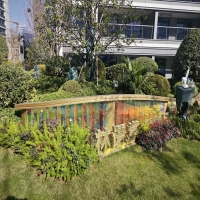Welcome to the website for landscape facilities products and knowledge.
How does the table’s surface affect the usability of sewing machines or other crafting tools?
The surface upon which you place your sewing machine or crafting tools is far more than just a passive platform—it actively shapes your entire creative experience. Many crafters invest in high-quality equipment while overlooking this fundamental foundation, not realizing how table characteristics directly influence functionality, precision, and comfort.
Stability stands as the most critical factor. An unstable or vibrating table transforms precise stitching into jagged lines, particularly at higher speeds. The machine's vibrations amplify through inadequate surfaces, causing thread bunching, skipped stitches, and uneven tension. Heavy-duty projects like quilting or denim sewing demand particularly robust surfaces that won't flex or shift under pressure.
Height and ergonomics significantly affect crafting endurance. Tables positioned too low force uncomfortable hunching, while excessively high surfaces create shoulder strain. The ideal height allows your elbows to rest at 90-degree angles with your forearms parallel to the floor. Continuous crafting on improperly sized tables accelerates fatigue and can lead to repetitive strain injuries over time.
Surface material properties matter considerably. Hardwoods like maple or oak provide excellent vibration absorption, while glass or metal surfaces often reflect vibrations back into the machine. The thickness and construction method—whether solid wood or laminated composites—affect both stability and noise levels. Some surfaces can even influence machine temperature by either insulating or conducting heat differently.
Table size and workspace organization directly impact workflow efficiency. Adequate space to the left of the machine prevents fabric drag, while sufficient depth accommodates larger projects. The surface texture should offer enough friction to prevent material slippage without being so rough that it snags delicate fabrics. Many crafters benefit from specialized sewing tables with built-in extensions and recessed areas that position the machine bed flush with the tabletop.
The right table surface transforms sewing from a struggle into a seamless creative flow. By understanding these often-overlooked factors, crafters can optimize their workspace for superior results, enhanced comfort, and prolonged crafting enjoyment. Your table isn't just holding your machine—it's actively participating in every stitch you create.
Related search:

Recommendation
Metal and acrylic color-changing combined curtain wall for large-scale public landscape facilities